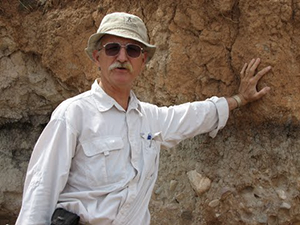Anthropology Colloquia Series: A Clovis Comet, Late Pleistocene Human Population? An Approach to Science presented by Dr. Vance Holliday
-Event-

Start Date: Feb 21, 2019 - 03:30pm
Location: Hibben 105
On Thursday, February 21 at 3:30 pm Dr. Vance Holliday, Professor of Anthropology and Geosciences at the University of Arizona will present his lecture, A Clovis Comet, Late Pleistocene Human Population Change, and Faunal Extinctions? An Approach to Sciencein Hibben 105 as part of the Anthropology Colloquia Series.
Abstract:
The Younger Dryas Impact Hypothesis (YDIH, aka “the Clovis Comet”) proposes that at ~12.9k years BP the Earth was subjected to some sort of extraterrestrial event responsible for: abrupt and catastrophic terminal Pleistocene environmental changes; extinction of late Pleistocene mammals; and demise of the Clovis “culture” in North America. Proponents of the YDIH fail to take into account abundant criticisms and contradictory data. Age control is weak to nonexistent at most localities claimed to have evidence for the YDIH. Late Pleistocene extinctions varied in time and space globally. Archaeological data provide no indication of demographic collapse or major adaptive shifts. Attempts to reproduce physical and geochemical data used to support the YDIH have failed or show that many indicators are not unique to an impact nor to ~12.9k BP. Geomorphic, stratigraphic, and fire records show no evidence of any sort of catastrophic changes in the environment at or immediately following the time of the purported impact. The data and the hypotheses generated by YDIH proponents are contradictory, inconsistent, and incoherent. If there was some sort of extraterrestrial event at ~12.9k BP, it had no terrestrial impact.
